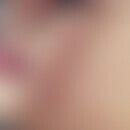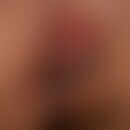Synonym(s)
DefinitionThis section has been translated automatically.
ClassificationThis section has been translated automatically.
You might also be interested in
EtiopathogenesisThis section has been translated automatically.
Apocrine and eccrine sweat glands in the intertriginous space of the perianal region lead to a humid environment that offers an ideal terrain for irritant toxic, constitutional and contact allergic disease triggers. Aggravating factors are secretion outflows in proctological diseases, anatomical peculiarities such as funnel anus or formation of mariscs. The consequences are macerations and epithelial exfoliation. In this respect, the picture of anal eczema, regardless of its cause, is often that of a (uniform) erosive-weeping, usually torturous-itching dermatitis. In case of sensitization to local therapeutics, all kinds of care products, see below contact allergic anal dermatitis (anal eczema).
LocalizationThis section has been translated automatically.
DiagnosisThis section has been translated automatically.
In the causal clarification of allergic contact eczema, a search must be made for potential allergens in basics, preservatives or active ingredients in external preparations (ointments, suppositories). Intimate sprays, powders, condoms, dyed toilet paper, detergents and disinfectants can also cause contact sensitization. It is important to exclude hemorrhoidal disease, inverse psoriasis and atopic diathesis (see differential diagnosis below).
Differential diagnosisThis section has been translated automatically.
- Frequently:
- inverse psoriasis or intertriginosa psoriasis
- Streptococcal dermatitis, perianal
- Perianal candidiasis
- perianal tinea
- Erythrasma
- lichen sclerosus et atrophicus
- lichen planus
- lichen simplex chronicus
- Oxyuriasis.
- Rarely:
General therapyThis section has been translated automatically.
- Rehabilitation of the proctological basic or concomitant disease. Avoidance of irritants and potential allergens. Soap-free cleaning of the anus with clear water. Application of local anti-inflammatory agents on the basis of lotions and pastes containing zinc.
- In case of weeping anal eczema, short-term use of ointments containing hydrocortisone(Vaseline has proven to be a good basis, as it has only a low irritant potential). A steroid-free alternative would be Lotio alba.
- If necessary, sitz baths with synthetic tanning agents (e.g. Tannosynt and Tannolact) or with disinfectants (e.g. potassium permanganate: dissolve a few crystals in lukewarm water to produce a strong pink-coloured solution).
Diet/life habitsThis section has been translated automatically.
- From a dietary point of view, it is recommended to avoid alcohol and spicy foods.
- Washing with soap should be avoided.
- The cleaning of the perianal area can be done with clear water (best bidet use-if bidet is not available, a good option would be the HappyPo Easy-Bidet (mobile hand-bottom shower) or with vegetable oils (e.g. olive oil) applied with soft paper towels.
LiteratureThis section has been translated automatically.
- Proske S et al (2004) Anal eczema and its benign simulators. dermatologist 55: 259-264
- Rajalakshmi R et al (2011) Lichen simplex chronicus of anogenital region: a clinico-etiological study. Indian J Dermatol Venereol Leprol 77:28-36
- White hair E (2015) Genitoanal pruritus. dermatologist 66:53-59
Incoming links (11)
Acuminate condyloma; Anal eczema contact allergic; Anal fissure; Analpruritus; Analpruritus; Atopic anal dermatitis; Bile acid loss syndrome; Haemorrhoidal diseases; Intertriginous psoriasis; Marisks; ... Show allOutgoing links (19)
Acrodermatitis enteropathica; Anal dermatitis cumulative toxic; Anal eczema contact allergic; Analpruritus; Atopic anal dermatitis; Bowen's disease; Chronic mucocutaneous candidiasis; Dyskeratosis follicularis; Erythrasma; Hydrocortisone; ... Show allDisclaimer
Please ask your physician for a reliable diagnosis. This website is only meant as a reference.








